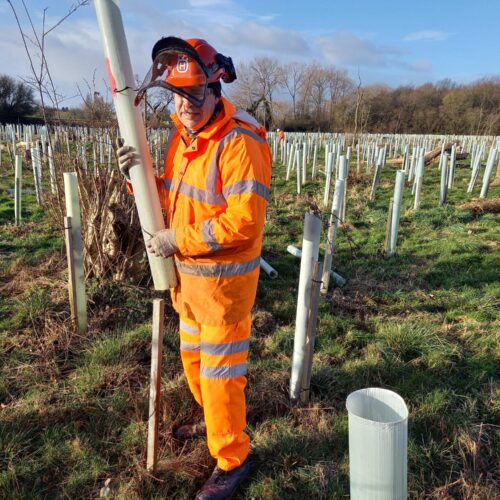How do we apply and integrate evolving technologies to improve the spaces and places we design?
A recent conference at New London Architecture – Smart London: How can technology inform city shaping? – highlighted the many evolving means of collecting, analysing and representing data that are having significant effects on how we approach design. Data-orientated programmes like GIS and data-focused methods of working like BIM, are already very much informing our way of work. Others have the potential to significantly alter how we work and interact with the design process and the “final product”. But what questions should we be asking of our technology as it develops and grows? How should we be using this technology to address the issues of our generation in order to better provide for future generations?
Firstly, what are the issues of our generation? This blog piece isn’t long enough (thankfully) to deal with that question, but one seemingly basic need we are struggling with in the UK is shelter. Housing provision and prices, the allocation of sites and getting projects of a suitable quality actually built – all remain a huge challenge. How are these and countless other issues relating to education, health, wellbeing, transport, employment, parks and open spaces, to name a few, best served by technology?
A lesson from the conference was that the integration of developing technologies within the construction industry will continue to improve its quality and efficiency (albeit not overnight), but that its application within the planning system could be where it would have the greatest impact on these issues. Currently local planning authorities will tend to have information relating to past and current developments on physical file and possibly in PDF format. But in general there seems to be a lack of accessible, useable and interactive data, and there is a huge disparity between the technologies used to produce planning applications and what is then available on local authority websites. The result is that, as it stands, the stewards of our built and natural environment are so overwhelmed they are falling behind the industry they work so closely with and are unable to match its development pace.
At the same time the technology is evolving so quickly that it is both inspiring to witness and daunting to keep up with. It has infiltrated our businesses, our homes and our pockets. Data is available at a level utterly unprecedented – speakers at the conference indicated that there are 30 billion connected devices worldwide, 2.9 million emails sent per second and 50 million tweets per day – this is real time information out there in the world coming from everyday people that use the built and urban environment we try to shape and protect. It comes from sources we can anticipate (travel data, environmental surveys etc.) but also from unexpected sources: it may not seem relevant that Kim Kardashian has a new “Dash” store opening in the centre of London until thousands of extra people a day visit it and hundreds of thousands of people Tweet, blog, Instagram and Snapchat about it and the surrounding area. Suddenly an environment has a huge influx of data relating to it being produced on a daily basis. How many people use a space, when, why, what do they do within and around it, how do they move to and from it, how long are they there for and what do they like or dislike about it?
So, is there potential for all this almost unlimited data to be, like renewable energy, harnessed and used for positive purposes, driving planning forward so it can become pro-active not re-active as a process? Companies are already doing it. Urban Intelligence collates planning data from across London and has published an interactive map that allows industry professionals easily and efficiently to look at planning policy, maps, strategies and documents that may relate to their site or project. Incidentally, this is a service that they offer free of charge to the local authorities whose data they’ve collated.
Zipcar and TfL have formed a partnership, as the impact of the success of the former directly impacts on the number of users of the latter as well as the number of private cars on the road (there are approximately 3 million car journeys made in London every day). Space syntax is developing a method of scoring the streetscape – Streetscore – which can aid planning and development to impact positively on our local environment. The City of London Authority is working with RWDI to ensure the development of the City is as sustainable as possible and its microclimate is amenable for pedestrians and cyclists. Thomson Ecology meanwhile has TIM (Thomson Interactive Mapping) – a mapping software that allows clients and consultants to engage quickly and easily with up to date site information and steer a project to a more workable solution, combined with GIS to add layers of information about a site.
So all of this data is out there and some is being collated and used. The technology exists and is continually being developed to make it more accessible by both the industry and the public. It’s clear there’s a use for it and a willingness to collaborate to get the most from it. But by its very nature data may be sensitive or private and so we must ensure that, as we harness it, we protect it at the same time. Who has the ability to actually action this?
The government and industry have proven they can push forward collaborative initiatives such as BIM. Perhaps it’s time local authorities were given the resources and capacity to fulfil their stewardship role, enabling them to not only catch up with but lead the future of development in the UK.











